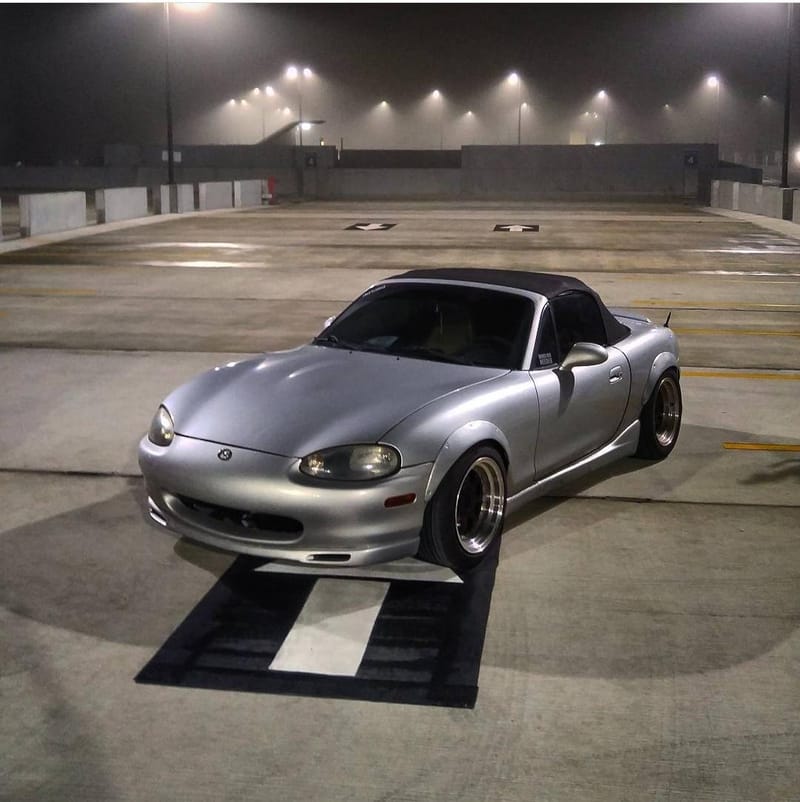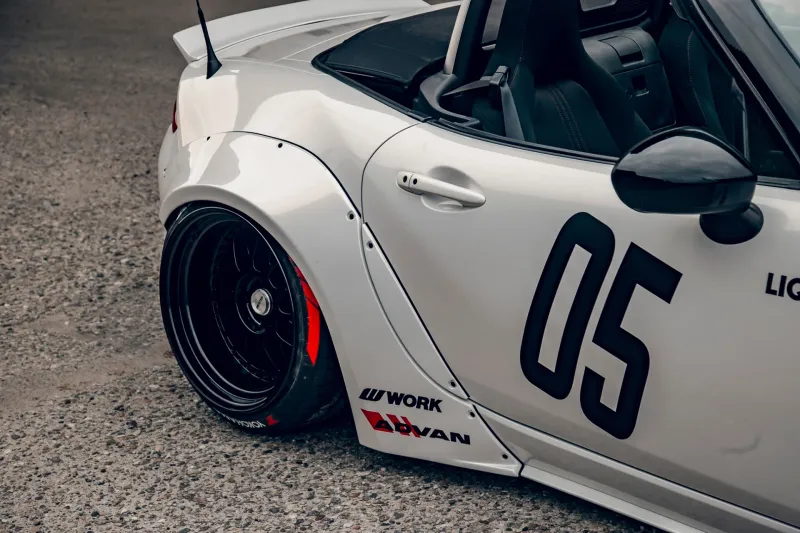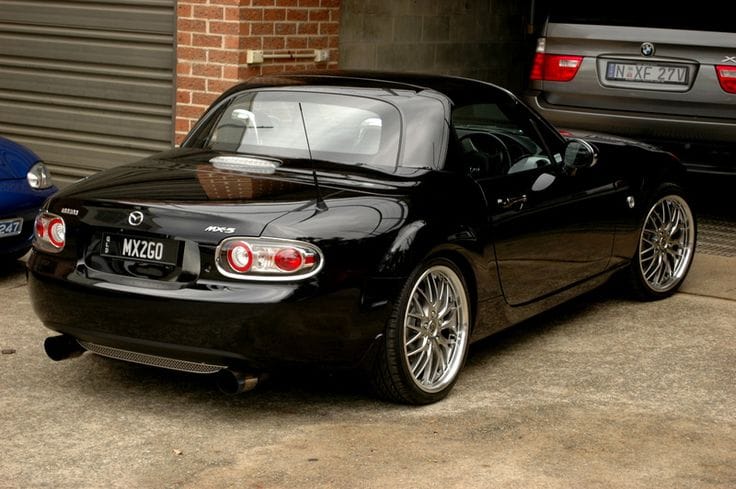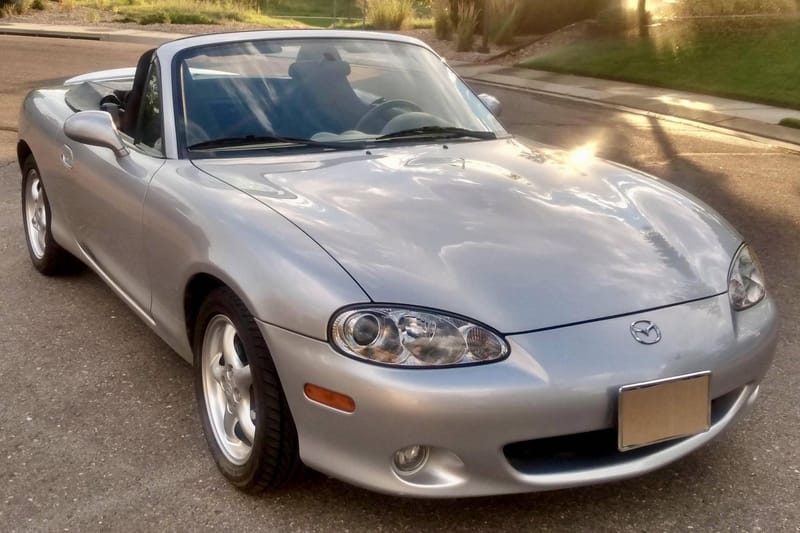Miata Wide Body Kits for the NA Miata
Going wide transforms the NA Miata from cute to aggressive, but it’s a polarizing choice. With permanent cutting and major costs, wide body kits require serious commitment. Is the visual and functional upgrade worth it?
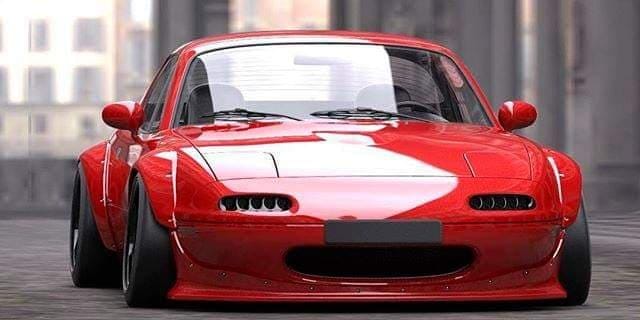
Enthusiasts who choose a wide body often do so to depart from the NA’s “cute” appearance, aiming for an edgier, more muscular style that reflects the car’s performance potential. Of course, this decision sparks debate within the Miata community: Purists cling to the idea that preserving the NA’s original lines is paramount, while customizers see radical modifications as the best way to stand out or complement big performance upgrades. Practicality also comes into play. A wide body kit typically requires permanent cutting and drilling of the original metal, so it’s a serious commitment both financially and in terms of labor. Ultimately, the decision to go wide should balance the aesthetic payoff against the involved costs and work.
History & Culture of Wide Body Kits
Wide body kits aren’t a new invention; they trace back to a long-standing tuning culture that’s deeply rooted in JDM influences. Brands like TRA Kyoto, also known in The Ultimate Guide to Rocket Bunny Widebody Miata Kits, and Tuckin 99 have shaped how NA Miatas are styled, inspiring everything from full-on show cars to time-attack builds. This trend has become a global phenomenon, with NA owners across continents applying these designs to daily drivers, weekend cruisers, and stance-oriented projects.
Internet forums reflect the spectrum of opinions on such modifications. Some argue that wide body kits are just “form over function,” questioning whether the added girth truly benefits track performance. Others see them as a chance to blend style and substance, particularly if the kit is paired with wider wheels, better tires, and upgraded suspension.

Common Misconceptions
Many newcomers believe they might find a wide body kit that simply bolts or clamps on without cutting into the car’s original metal. In reality, serious wide kits often require 50–80 mm of extra fender width, which is nearly impossible to achieve without cutting away existing panels. Smaller overfenders may only need a few pilot holes, but if you’re going for a big, bold look, as seen with Rocket Bunny or Carbon Miata’s offerings, be prepared to make permanent modifications.
There’s also a misconception that wide body kits automatically improve handling. While a wider track can theoretically boost cornering grip, you only get those benefits if you also run wider wheels, quality tires, and possibly rework the suspension (springs, dampers, sway bars, etc.). Simply widening the exterior doesn’t magically enhance performance; improper offsets or alignment can even cause steering quirks or extra stress on suspension components.
Kit-by-Kit Overview
One of the most popular options is the Carbon Miata Widebody Kit, known for its four-piece overfenders (+70 mm front, +80 mm rear) and optional bumper add-ons. Available in fiberglass or carbon fiber, the kit offers a good fit for the NA chassis and allows extremely wide wheel setups, but does require cutting and riveting. Meanwhile, the GReddy Rocket Bunny (TRA Kyoto) kit stands out for its iconic silhouette. Created by Kei Miura, it includes wide front and rear overfenders, a front lip, and a ducktail spoiler, giving the NA that instantly recognizable show-car profile. The cost can be higher, especially when importing, and installation involves similar cutting and drilling.

Older or rare kits like TWR, Rod Millen, Racing Beat, or Tuckin 99 carry a vintage appeal for those who prefer a more subtle wide body. However, these classic options can be challenging to source and may require secondhand hunting or custom reproductions. Budget-friendly choices include Bomex and Duraflex, though fitment inconsistencies and fiberglass cracking are common critiques. Some owners love the dramatic style, while others caution that you should budget extra for proper installation and reinforcement. For those who want a little aggression without a full wide body, subtle enhancements like R-Package Lips, Garage Vary Lip, or simply adding the best Miata coilovers with side-skirt paint can significantly alter the NA’s look without irreversible modifications.


Installation Considerations
Going wide involves more than just slapping on new panels. You’ll need to cut into the NA’s metal fenders to ensure no interference when turning or going over bumps, especially if you’re adding 70–80 mm of width. Proper measurement, test-fitting, and sealing are critical to prevent rust from forming on exposed metal edges. Rivets are popular for a raw motorsport aesthetic, though some prefer hidden fasteners for a cleaner finish.
When it comes to materials, fiberglass is more affordable and simpler to repair if damaged, but it’s heavier than carbon fiber. Carbon fiber’s weight savings and durability make it attractive for performance-focused builds, though it is pricier and can be trickier to fix. Either way, fitting significantly wider wheels (think 15x9, 15x10) will require offset calculations, tire choices, and possible suspension geometry adjustments to maintain balanced handling. Painting and finishing wide body pieces can also get expensive, occasionally matching or surpassing the kit’s purchase price once you factor in sanding, prepping, and color matching.
Cost Analysis
If you’ve been eyeing a wide body conversion, be aware that it can become a major investment. Kits alone can range from $800 to over $2,500, depending on brand and materials (fiberglass vs. carbon). Overseas shipping can inflate the price further, particularly for options like Rocket Bunny. Quality bodywork often runs anywhere from $1,000 to $3,000 or more, considering the cutting, smoothing, painting, and finishing required to make the new panels look seamless. Don’t forget that you’ll need wider wheels and tires, potentially running another $1,000 to $2,000. And if you’re adding suspension components or an alignment to optimize handling, that’s yet another cost layer to plan for.
Community Perspectives & Debates
In Miata circles, the debate over wide body modifications often revolves around performance versus appearance. Purists argue that you could spend the same budget on engine upgrades or a turbo kit, netting tangible driving gains. Enthusiasts counter that a wide body can be more than cosmetic fluff, especially if you pair it with tire and suspension upgrades. Another question is resale value, permanently altering an NA’s fenders might put off certain buyers. However, a well-done wide body build can become a coveted show car, possibly commanding a premium from like-minded enthusiasts.
Daily drivers can face challenges with a wide body, such as negotiating speed bumps and potholes, or dealing with road debris kicked up by wider wheels. On the other hand, some owners find the visual transformation so rewarding that it’s well worth the minor inconveniences.
Tips for Prospective Builders
If you’re considering going wide, research extensively on Miata forums, social media groups, and YouTube build threads. Many owners recommend starting with small flares or even cardboard templates to gauge how wide you want to go before committing to a final kit. Consult a professional body shop that has experience with fiberglass or carbon fiber panels to avoid expensive mistakes. Remember to plan your entire build, going wide often leads to bigger wheels, brake upgrades, and a more comprehensive suspension overhaul. If you’re on the fence, begin with a simpler lip kit or subtle overfenders to get a feel for the look and see if you really want to go all-in.
Adding a wide body kit to the NA Miata is a bold step that pairs striking style with the potential for performance gains, assuming you match it with wider tires, proper alignment, and potentially upgraded suspension. It’s not a casual decision: costs and labor can add up, and the modifications are generally permanent. Naturally, enthusiasts are split on whether the visual payoff justifies the work, especially when other performance mods might make a more direct impact on driving dynamics.
Still, if you love the idea of seeing a fiercely flared NA in your driveway, or if you envision transforming your Miata into a legit track contender that also turns heads at car meets, the wide body route can be incredibly gratifying. At the end of the day, it’s your build and your vision. Done carefully, a wide body Miata proves that even an already iconic roadster can be taken to new extremes of style and performance, no doubt continuing the tradition of personalization that’s helped the NA remain beloved for decades.

